What if you could learn to take advantage of these so called ‘fakeouts’ with a clear, simple trading system that has a great risk to reward ratio?
Here is a strategy I have been using to successfully take advantage of false breakouts that occur on a regular basis throughout different currency pairs. I’ll take you through a trade I took recently so you understand this strategy in 5 simple steps.
Step one: Identify support and resistance
I am a strong believer that support and resistance levels should be obvious. I am interested in levels everyone else is aware of and looking at. An exercise I often suggest is to take a blank chart on the time frame you are interested in and then mark-up the support and resistance levels as quickly as possible.
Here is a blank GBP/USD pair chart on the weekly timeframe.
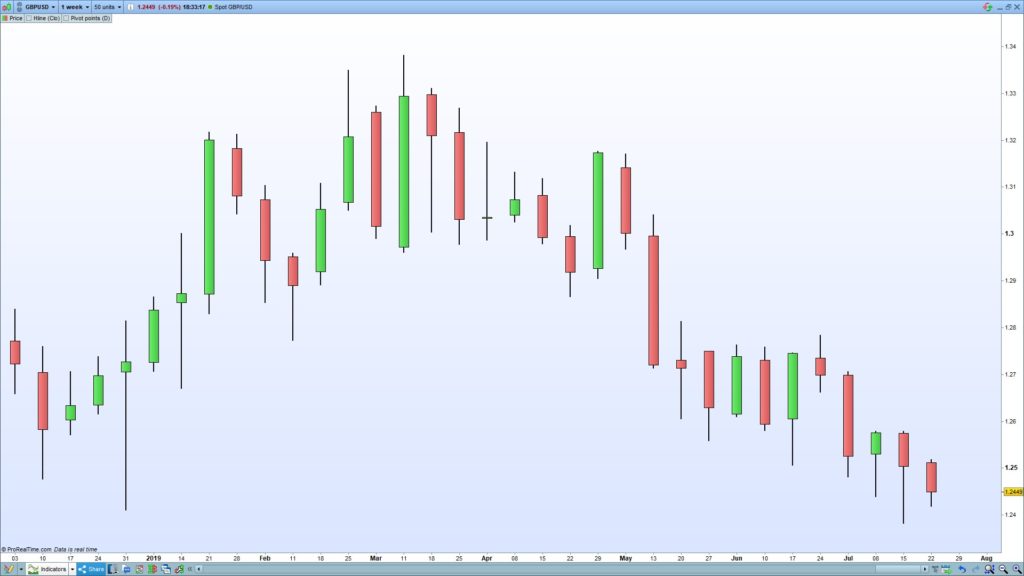
Here is the same chart with major and obvious support and resistance marked up.
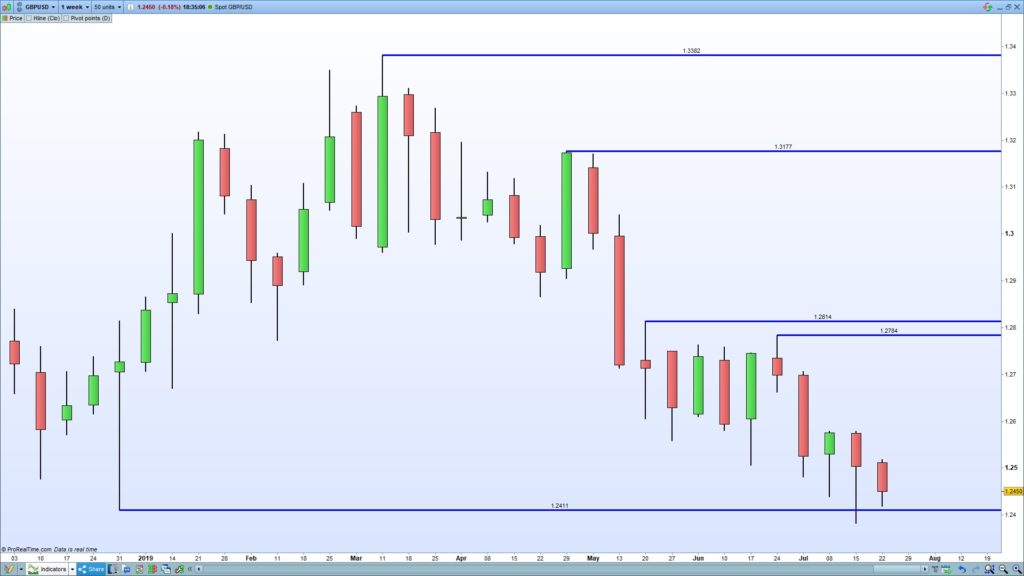
This is the foundation from which I will work from.
For our trade, the low of 2019 at 1.2411 is of interest to us as it is a major and obvious support level.
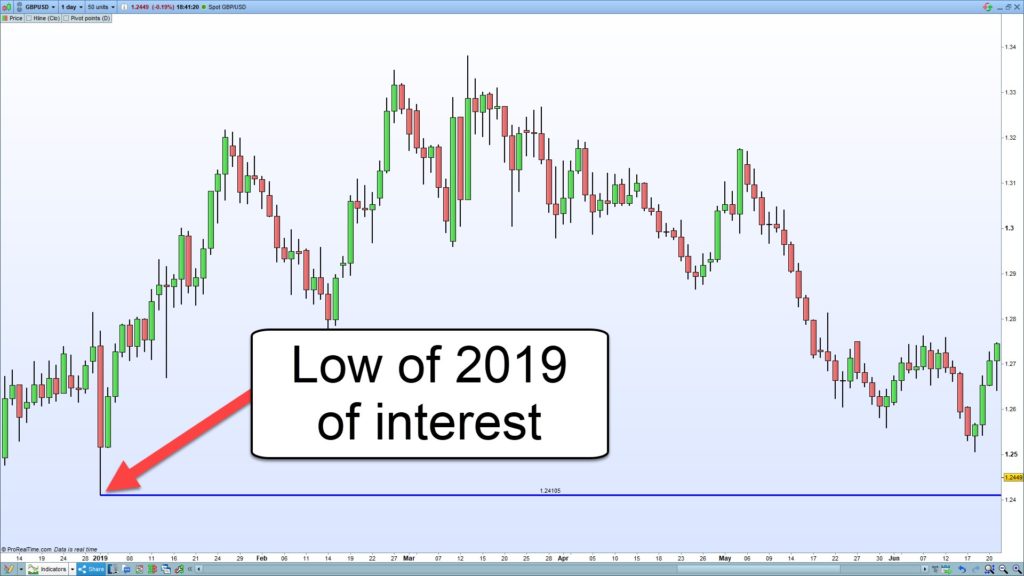
Step two: Wait for the break of level
We need to see a lower-low through the 1.2411 to set our trade up. Once this happens we become closer to taking a trade.
Whilst the price is below our support level we do not do anything other than wait and be patient. No jumping the gun or trading before our setup has occurred!
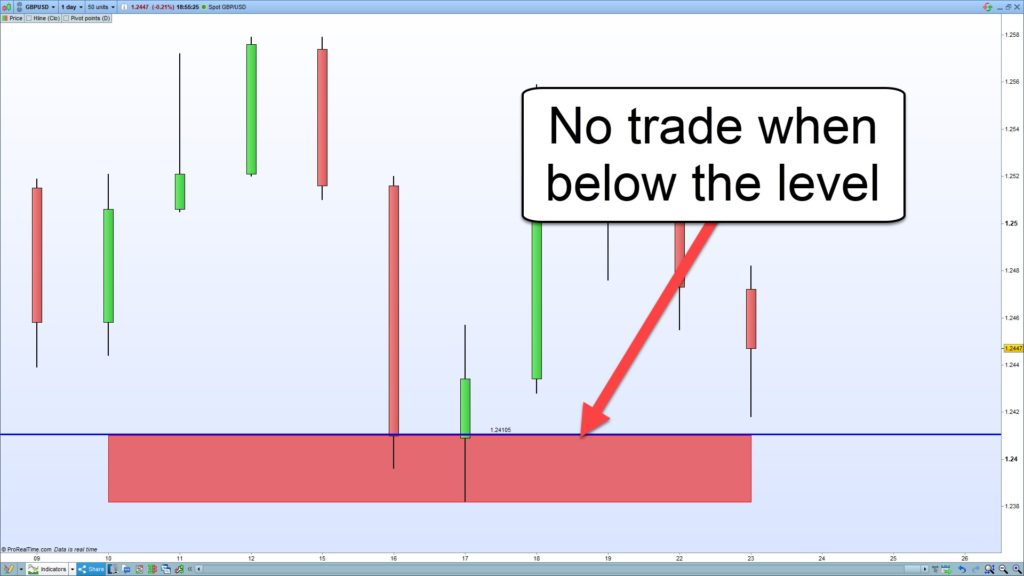
If the market wishes to continue down and become an actual breakout then sobeit. We have no entry and we do not chase the market. We await the next trading opportunity and we remind ourselves that with trading, there are always more opportunities around the corner.
We also want the market to move a reasonable distance through the level. Not just a few pips. This will depend on the specific pair you are looking to trade and the current levels of volatility. For GBP/USD, at least 25 pips are needed to set the trade up, but with experience you will develop a feel for the when the ‘fakeout’ is enough.
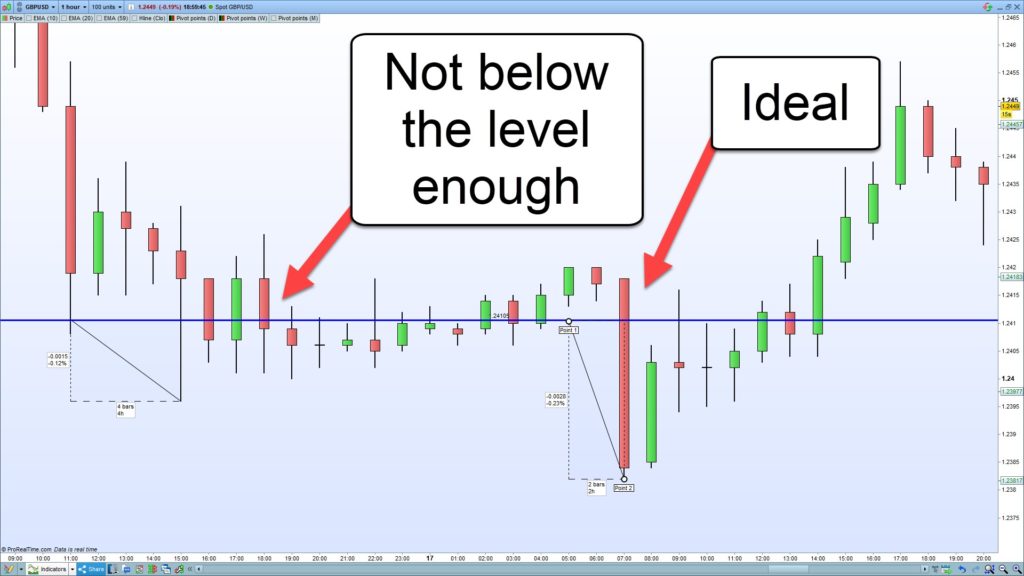
If we are going to get an opportunity, we will see an exhaustion of the sellers. Often with one last push down into a new low to create a ‘bear trap’ (where new sellers get trapped in short positons and quickly squeezed). The 7am hourly candle marked above is a perfect example of this. One last push to take the market to a new low.
How many times have you fallen into a trap like that where you seem to go short just as the market reverses?
Step three: Placing the entry
We are looking for a break back into the previous range. A break back above the support level.
It pays to remember that there’s a balance between opportunity and confirmation when it comes to an entry. On the other hand, the more aggressive you are to enter the market – the closer your entry is above the support line – the earlier you are in a trade if the ‘fakeout’ does go on to play out. On the other, the more the market returns into the previous range, the more confirmed the move is at the expense of a better entry.
On this trade I placed my entry just above the previous overnight ‘noise’ at 1.2424. The GBP/USD pair usually trades slow and sideways when the European and US markets equity markets are closed and I wanted the market to be clear of this before entering in the trade.
This entry is suitable to be taken on order (as opposed to manually ‘at market’), so is suitable for people who may not be able to monitor the markets continuously.
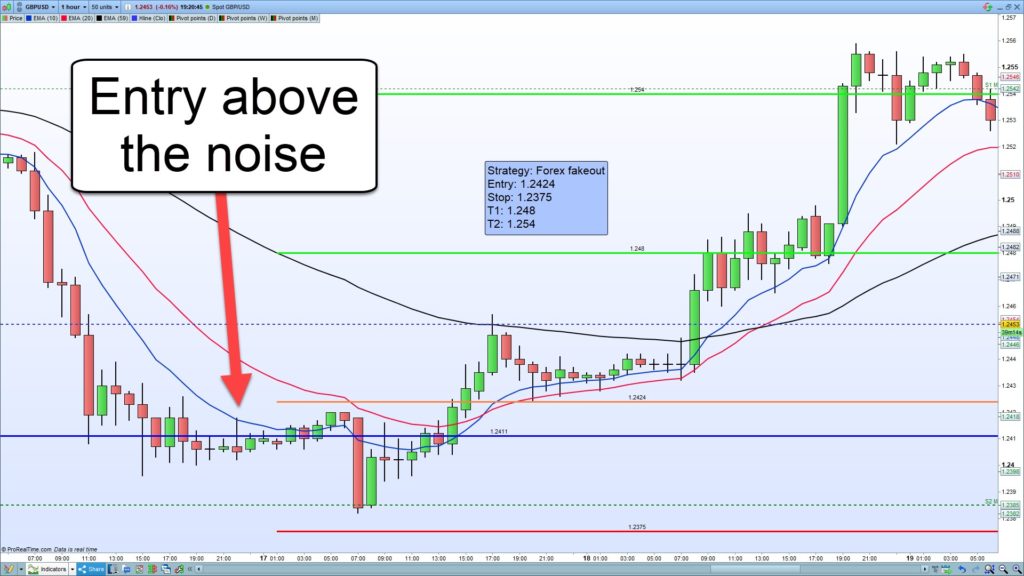
Step four: Placing the stop
One of the big strengths of this strategy is you have a clear and unambiguous level to place your stop loss. This is below the low of the ‘fakeout’. Here it was placed at 1.2375, a few pips below the lowest point of the ‘fakeout’.
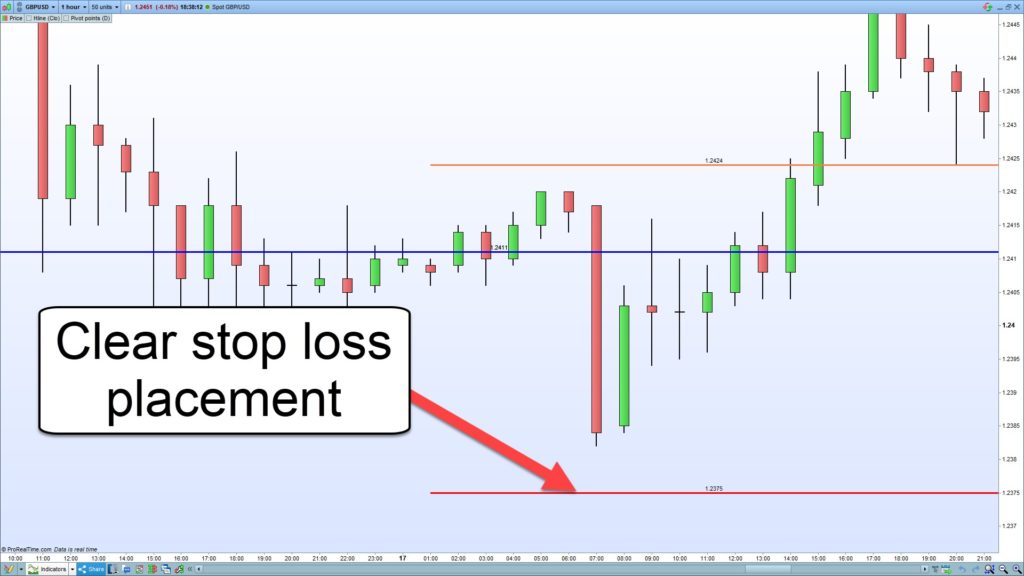
When you know where to place your stop you can then manage your risk and get correct position sizing.
Do not place a trade unless you have figured out where your stop is.
Step five: Taking profit
The way I like to set profit targets with this strategy is to look for a swing to pull a Fibonacci retracement. Once that is done I look to scale-out (partially close my positon) 50% just below the 50% Fibonacci retracement.
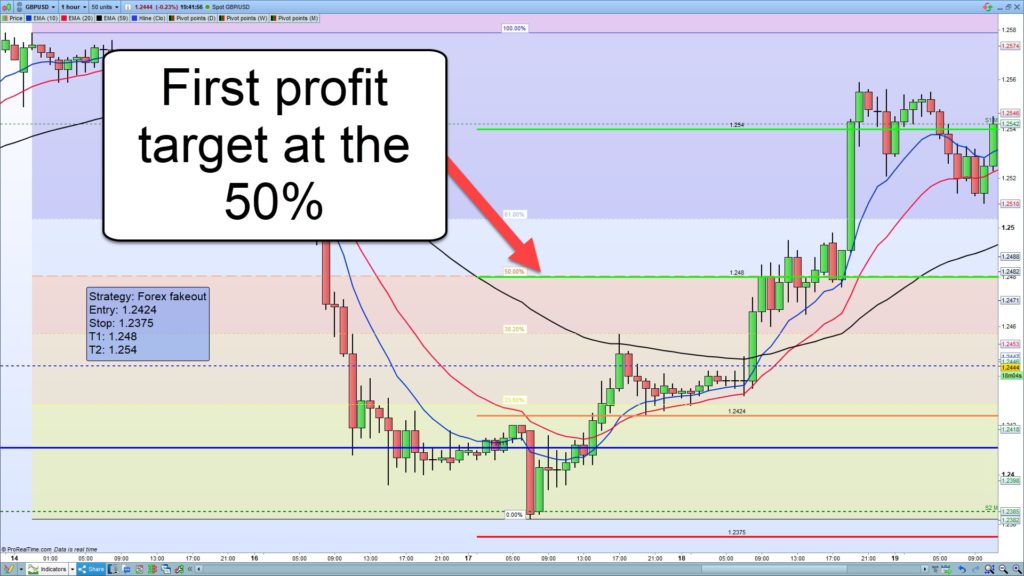
The second profit target depends on your trading style and judgement fundamental factors. If you are fighting a fundamentally weak currency (as the pound has been during the Brexit uncertainty), then you may choose to close the remaining 50% somewhere prior to the full retracement.
Alternatively, you may wish to leave the second 50% to see if you can catch a big swing trade. This can be a great strategy, and learning to identify swing trade opportunities can leave to some of your biggest trades (and largest profits) of the year.
In Summary
Trading strategies require a consistent approach, and this one is no different. The steps have to be followed correctly and assessed individually to ensure the rules of this strategy are being correctly adhered to.
Remember:
- Identify major support and resistance levels
- Wait for the market to break those levels and enter a new trading zone
- Place your entry back in the previous zone
- Place your stop below / above the ‘fakeout’
- Take profit at the 50% Fibonacci retracement and then decide on how to manage the second 50%
I’d recommend either demo trading this strategy or trade it using small amounts of capital. That way you can see if it suits your trading personality and whether you wish to add it to your existing trading strategies.
Simon Massey can be contacted at TradeRoomPlus
